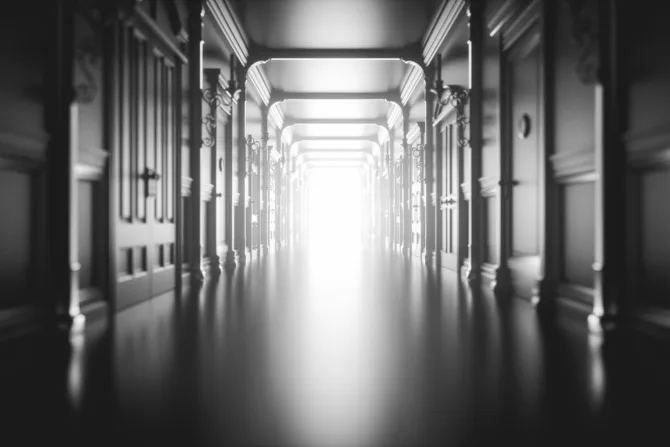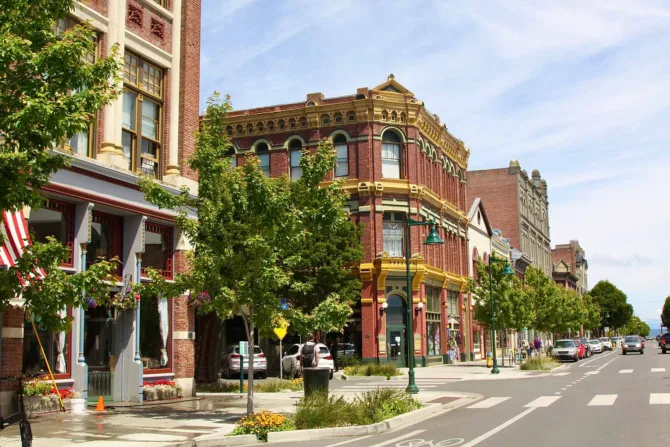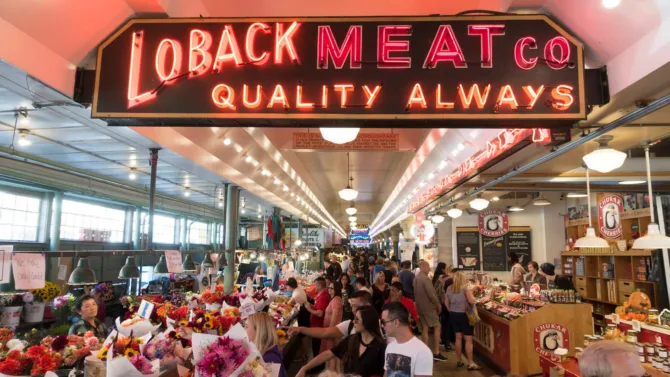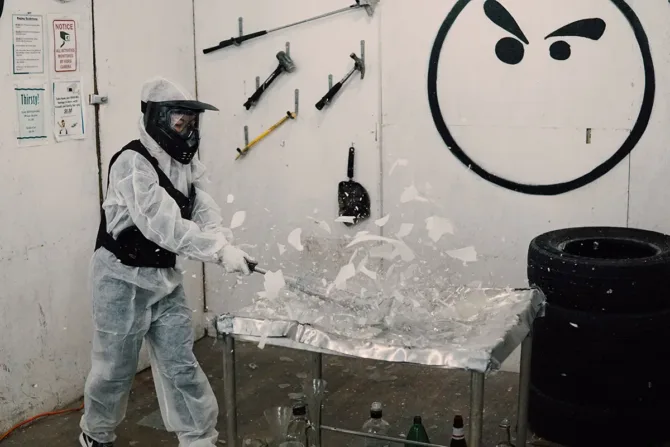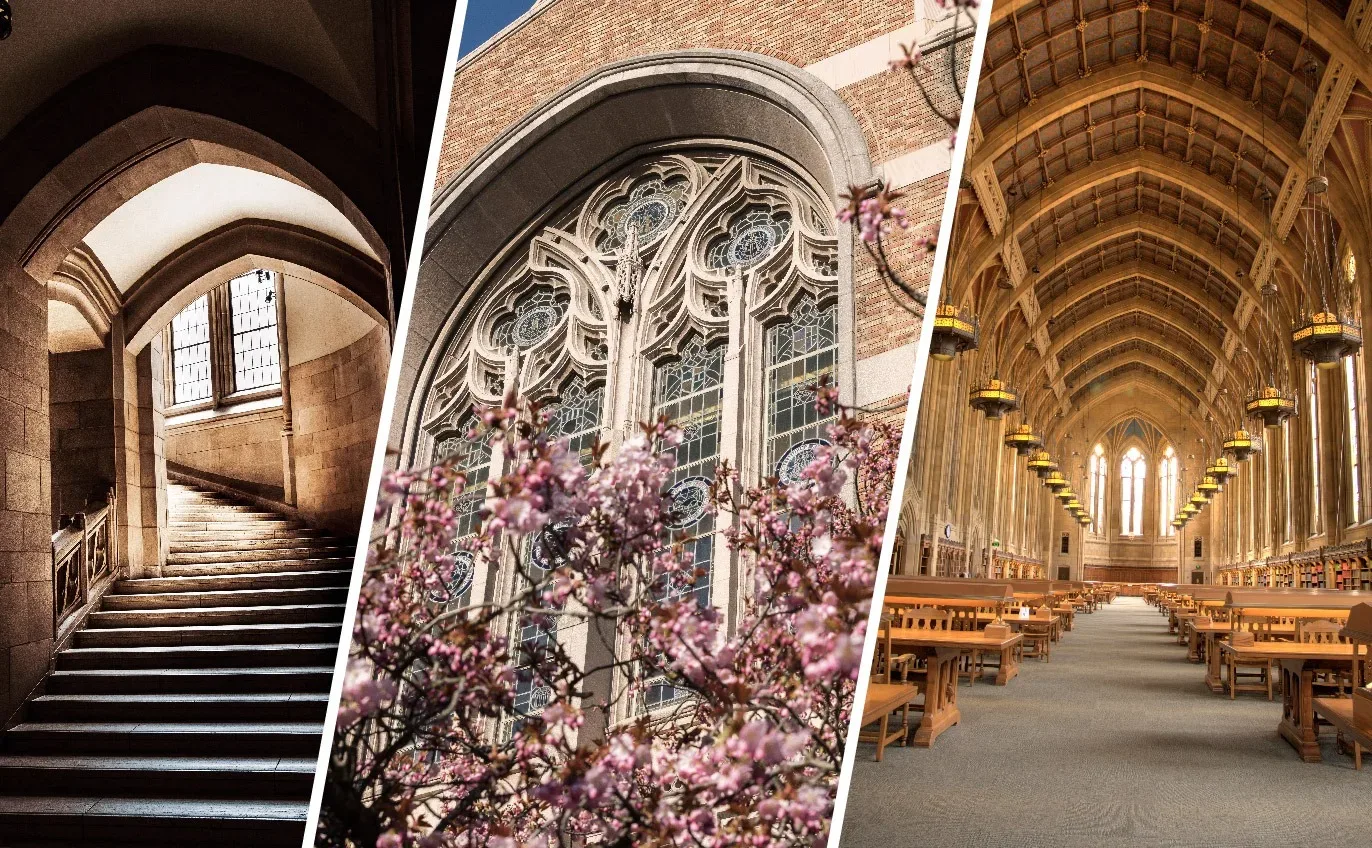
Published August 2022 | Updated October 2023
Did you know that the University of Washington campus, first of all, is the prettiest park in Seattle, and secondly that you can just, like, go there?
Okay, it’s technically not a park, but it’s a myth that folks who aren’t current UW students can’t or shouldn’t access the campus. At three-quarters the size of NYC’s Central Park, the UW campus is teeming with pocket parks, rare plants, mini-beaches, secret curios, urban wildlife, an entire working farm, a complicated neural network of walking paths, and diverse architectural styles both beautiful and bizarre. If you haven’t taken a stroll through this massive 634-acre green space before, or even lately, it’s time.
Secret alley coffee ☕
Just a block north of the first stop on your UW tour is Cafe Allegro if you need fuel for your journey. Established in 1975, it’s the city’s oldest coffeehouse, and no cafe more looked the part: it’s hidden behind an ivy-covered Spanish Revival building (which houses an enchanting bookstore, Magus Books, might we add), it’s got a secret alley entrance, and the cafe itself is a rabbit warren of small rooms full of students and folk art.
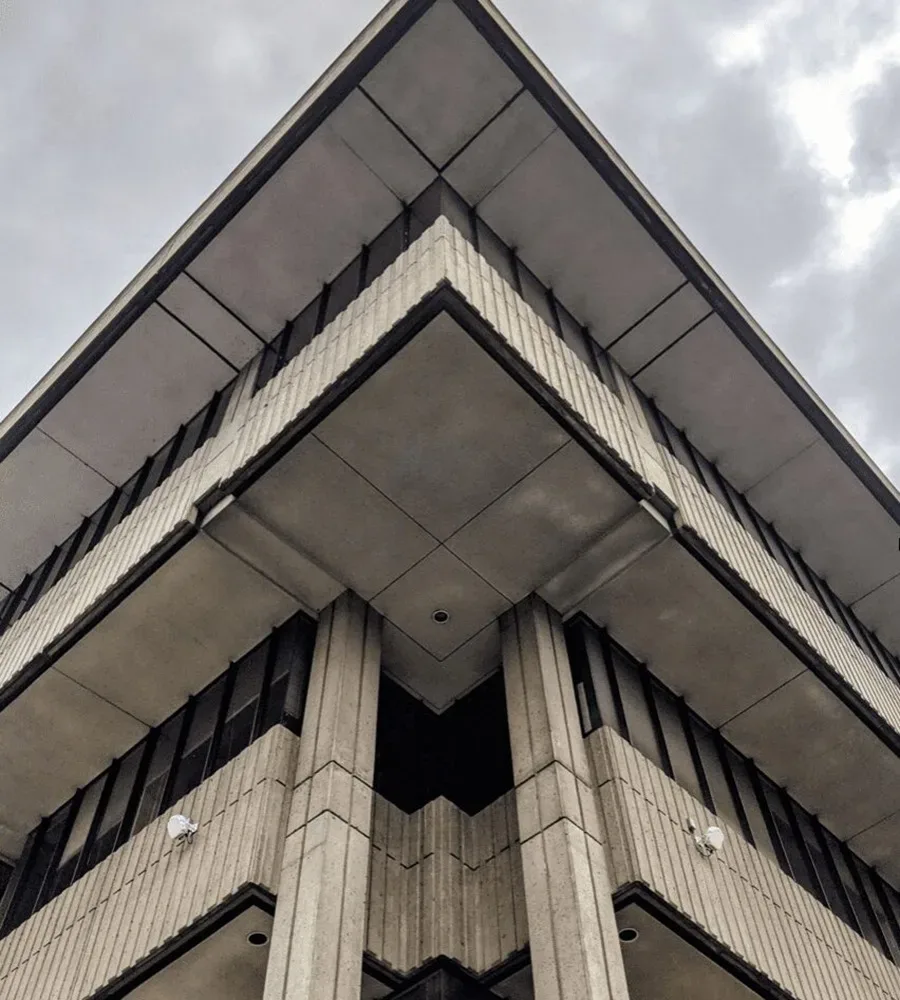
📸: MVH
1
A brutal beginning 🏢
The gateway to the UW Campus is not actually on the campus but on the Ave, or facing it, anyhow: It’s Schmitz Hall. This Brutalist behemoth houses the university’s administrative offices for student services. Designed by Waldron and Pomeroy, the firm that also dreamed up Edmonds Community College, it debuted in 1970. A block of dorms was initially meant to be included on top and never manifested, but the whole Soviet housing-block look certainly was retained.
Schmitz Hall is a total cosplay of a Le Corbusier building, particularly Le Couvent de Sainte Marie de La Tourette in Eveux-sur-Arbresle, France, which is mimicked by Schmitz’s top-heavy silhouette, boxy banks of windows, and harsh geometry.
When you’re done looking up, look down: the red brick paving is an amuse-bouche of the grand piazza in Red Square, your entree just across the skybridge.
📍 Schmitz Hall: 1410 NE Campus Parkway
There’s not much to see inside, honestly. They keep all of the best Brutalism outside.
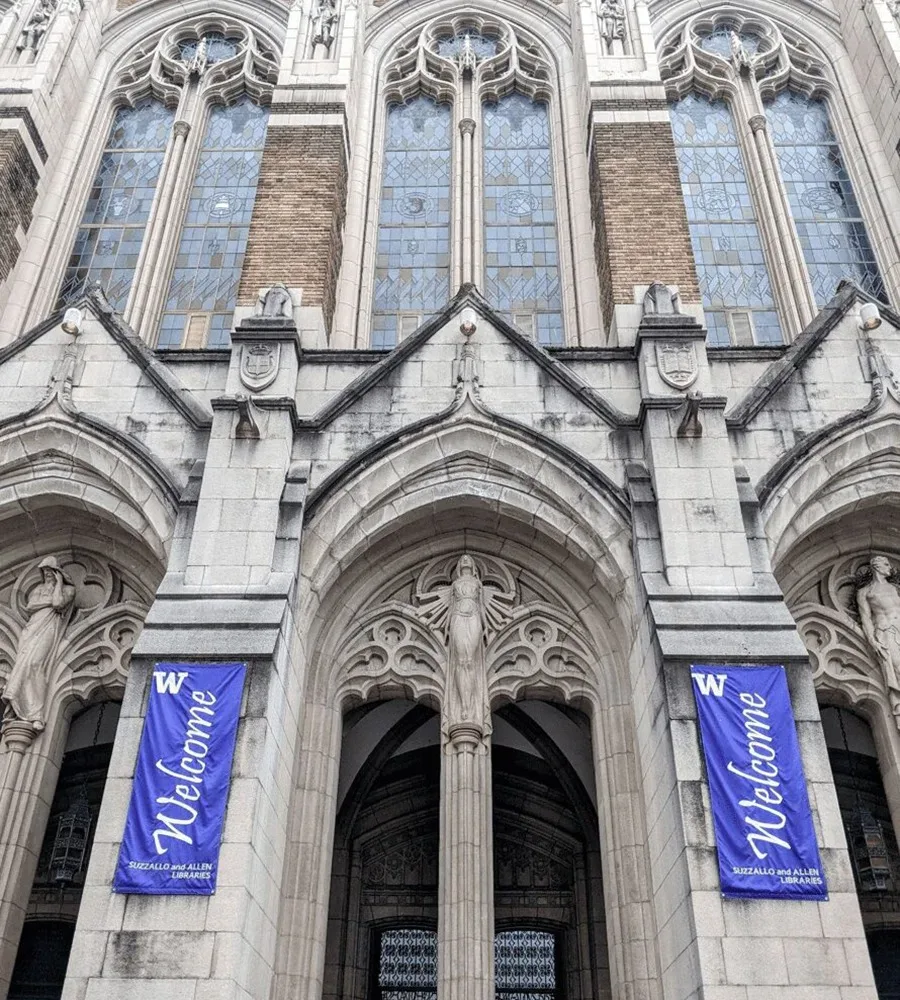
📸: MVH
2
Suzzallo, duh 📚
The Suzzallo Library is the least secret of the architecture on the campus, but it’s a must-visit. The cathedral-like library took 33 years to complete, the UW calls it “The Soul of the University,” and it’s the HQ of one of the world’s largest library systems. Designed by architectural firm Bebb and Gould, the Suzzalo’s flamboyant Collegiate Gothic facade is just the start of the dazzlement here.
On the exterior, spot the terracotta sculptures of great thinkers like Shakespeare and Beethoven and the goddess-like cast-stone figures in the main entrances representing Thought, Inspiration, and Mastery.
Step inside and note the rib vaulting used to support the building’s weight, common to Roman, Islamic, Byzantine, and Gothic architecture. Climb the slow, sweeping Grand Staircase with its ornate balustrade to find the so-called “batwing” made from steel reinforcing beams installed during the Suzzallo’s 2002 seismic renovation.
Proceed into the show-stopping Graduate Reading Room, which evokes a cathedral’s sanctuary, featuring 65-foot-tall stained-glass lancet windows and a vaulted timbered ceiling. Don’t miss the oriel windows, the painted details in the ceiling squares, or the oak bookcases crowned with carved friezes of native plants. Major Oxford vibes.
Upon its opening in 1927, this room was deemed “the most beautiful room on the continent.” Stand there for a minute. Soak in the beauty. Enjoy the silence.
📍 Suzzallo Library: 4000 15th Avenue NE
You can still see a ton of cool stuff just on the outside. The full indoor experience is pretty unforgettable, though, gotta say.
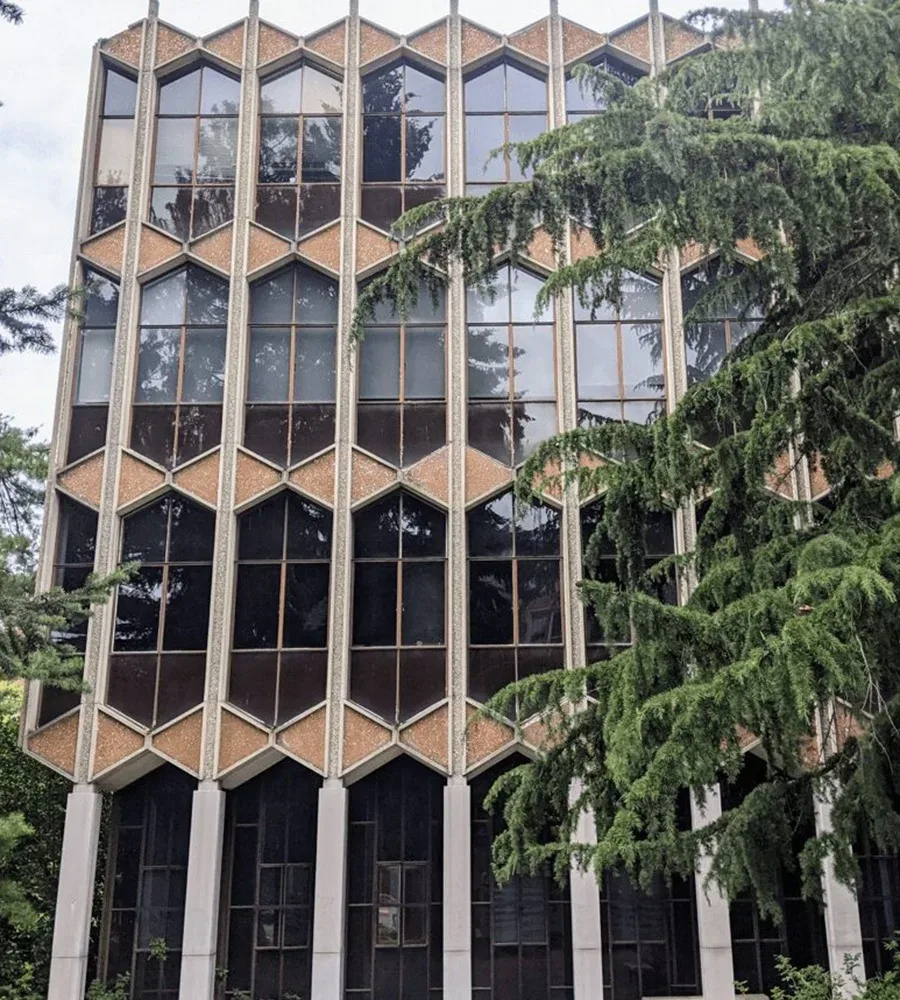
📸: MVH
3
Put some respect on Sieg’s name 📸
The Sieg Building don’t get no respect. Before 2003, when UW’s Computer Science and Engineering Department got their nice new Paul G. Allen Center, they lived at Sieg–which the students sneeringly called “The Pride of UW,” thanks in part to its crumbling facade.
But Sieg was once a glittering jewel in the campus’ crown. When construction was finished in 1958, Sieg was considered a futuristic marvel, the subject of photoshoots and souvenir postcards. The idea was to combine architectural elements from both the Collegiate Gothic and modernism movements, a marriage of opposites, to echo the mighty Suzzallo Library just around the corner. Sure, you can sort of see what they were trying to do in the leaded glass windows and the elongated shapes formed by them.
The eccentric result has been called one of the homeliest buildings on campus, but we think it has heart. Sieg is like a fabulous thrift-store find, frozen in time. Maybe it’s not new with tags, but wouldn’t you love to find a vintage minidress in this pattern?
Note: At the east end of Sieg, if you turn around 180 degrees, you’ll be facing the brick-clad Kirsten Wind Tunnel. It’s a whole building that’s just a wind tunnel. Not much to it architecturally, and you can’t go in, but it’s fun to think about.
📍 Sieg Building: 1851 NE Grant Ln
You can really get the full effect from standing outside. It’s highly selfie-able. Er, self-ish.
⛲ Don’t forget ⛲
Not a building, but it contains architecture! Just south of Drumheller Fountain, look for a little pathway through the hedges on the left-hand side. It’ll lead you to serene little Sylvan Grove Theater and its row of hand-fluted Ionic columns. They were salvaged from the incarnation of UW in downtown Seattle when it was demolished in 1908. First used for plays, this pocket parklet is usually littered with book-readers and lunchtime picnickers.
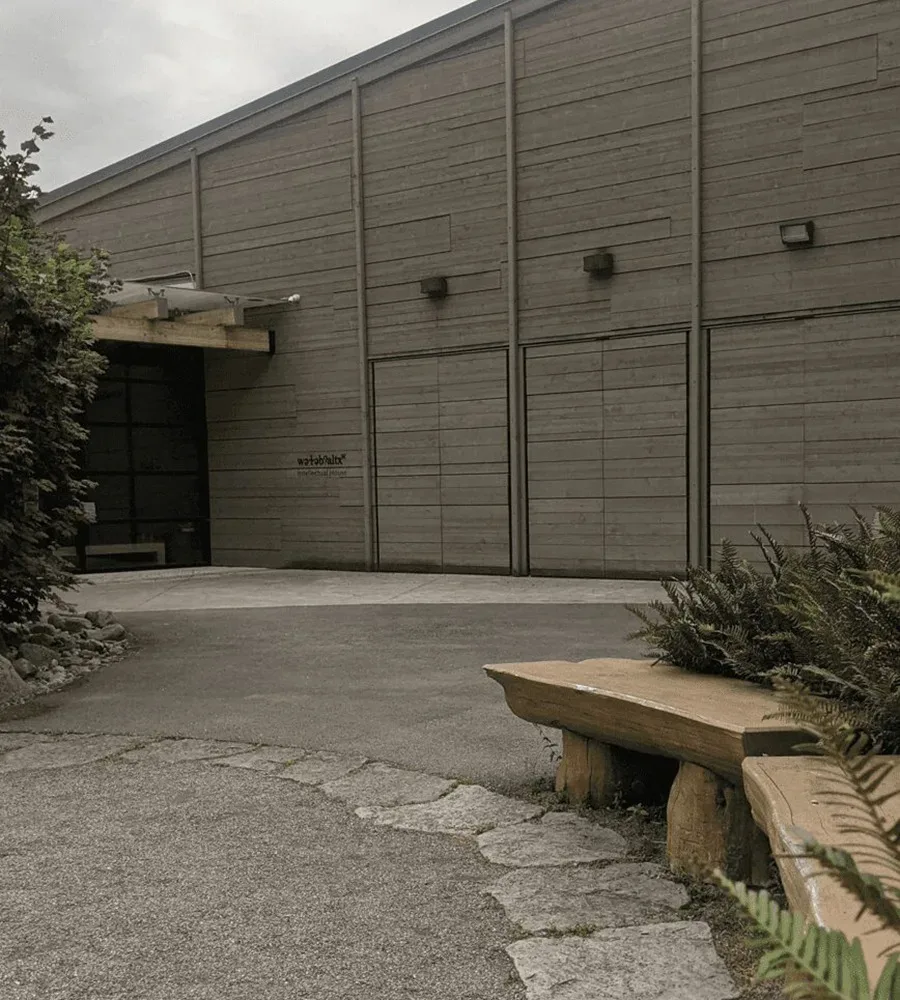
📸: MVH
4
A smart house 💯
About a third of a mile up Skagit Lane and just around the corner, you’ll find wǝɫǝbʔaltxʷ – Intellectual House, one of the newest buildings on campus. Completed in 2015, wǝɫǝbʔaltxʷ (pronounced “wah-sheb-altuh” in Lushootseed) borrows architectural elements from longhouses built by the local Duwamish tribe, meant to foster community events. Outside the main entrance is a series of cedar benches flanking a fire pit, where salmon can be cooked the traditional way, and the area is landscaped with native Pacific Northwestern plants like sword ferns and thimbleberry shrubs. Inside, the building holds an expansive gathering space for 500, a large kitchen, and a conference room. Western red cedar wood is a theme throughout the interior.
📍 wǝɫǝbʔaltxʷ – Intellectual House: 4249 Whitman Ct NE
Obscured by vegetation, this building can be a little tricky to locate. From Sieg Hall, pass the Husky Union Building, through the HUB Yard, and then follow Skagit Lane northeast until it dead-ends at Stevens Way. Take a left on Stevens and then the very first right onto a nameless foot path, which comes up quick. You’ll know you have the right place when you see the circle of benches outside. If you end up at Lewis Hall next door, you didn’t take your right soon enough.
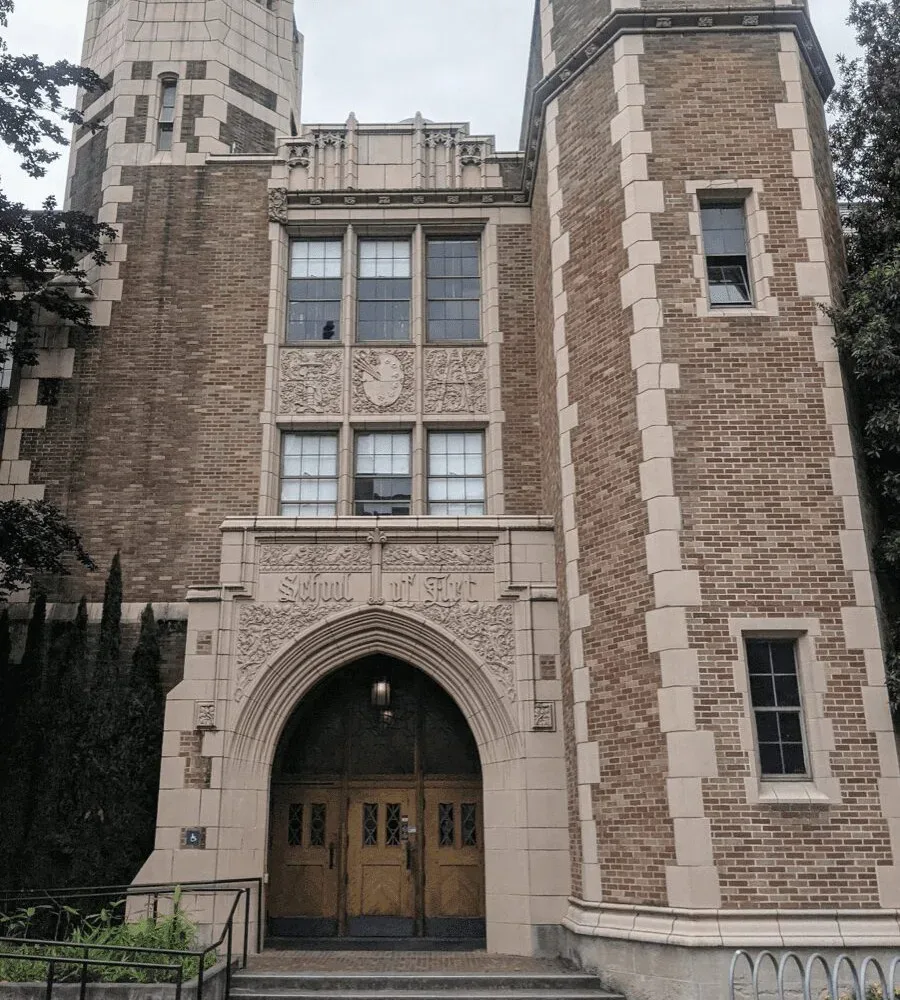
📸: MVH
5
Meet the twins 👯♀️
Turn around and head back to Stevens Way, then west on Pierce Lane, and you’ll see the twin School and Music and School of Arts at the entrance to the Quad. Completed in 1950 and designed as a pair, these buildings are fraternal twins, both sporting turquoise-domed towers and highly ornate Gothic/Elizabethan facades, both with their names carved in script above their entry arches. But look past their similar faces, and you’ll notice that one twin is actually about three times larger than the other, thanks to a 46,074-square-foot addition that the UW Art Building received in 1965. A matching extension for the UW Music Building was planned, but the funds couldn’t be scraped together. So now they sit facing each other unmatchingly… but at once perfectly matched.
📍 UW School of Music and UW School of Art
These buildings’ street addresses are just “Music Building” and “Art Building,” because the street they’re on isn’t a street but Pierce Lane, open only to foot traffic.
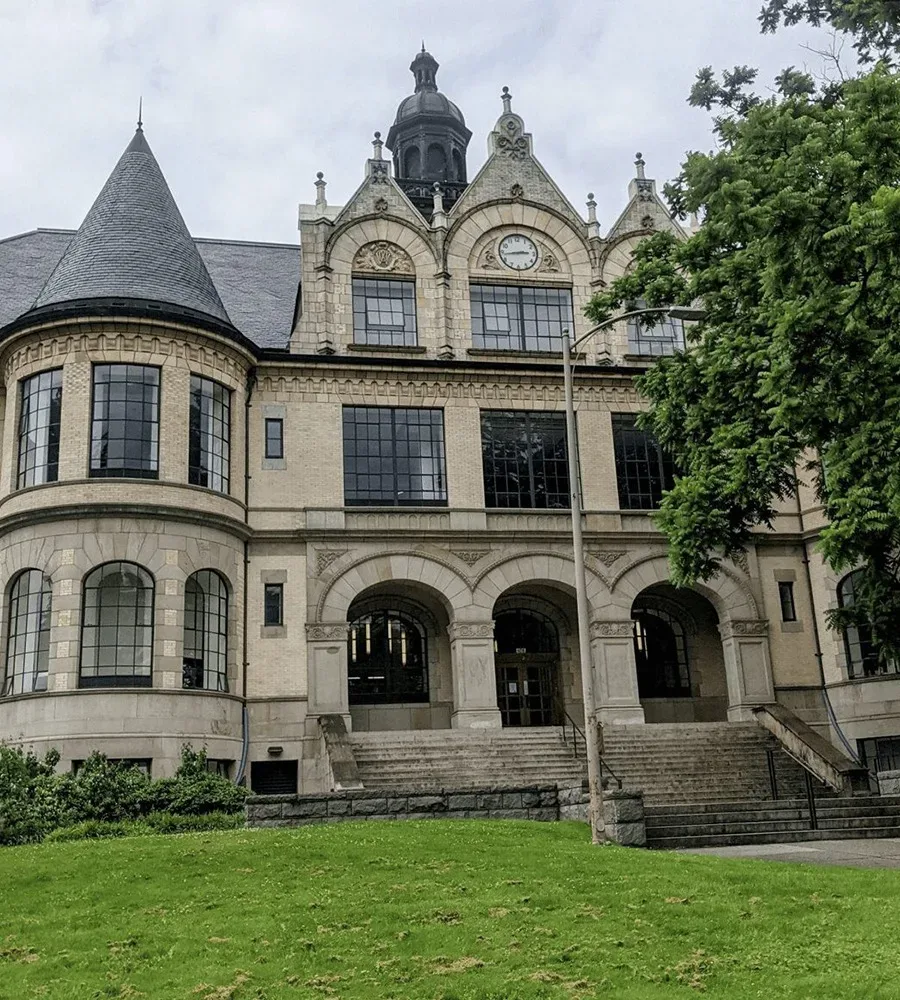
📸: MVH
6
For whomst the bell tolls 🔔
Continue through The Quad (full name: Liberal Arts Quadrangle), among the famous cherry blossom trees, and stop in the center. Turn right and proceed toward chateauesque Denny Hall. Built in 1895 in the French Renaissance Revival style, with its signature cylindrical towers and turrets, Denny is the oldest building on campus, and initially, it WAS the entire university. It’s been renovated many times over its 126 years and is a great example of how one can maintain a building’s bone structure throughout multiple overhauls. The distinctive cupola that crowns the building holds The Varsity Bell, a 400-pounder that dates back to 1859 and was used to signal the start of class to students. Today, an electronic carillon sounds the hours instead, and the real bell’s rung only once annually, at Homecoming. If you can get access, the extremely Hogwartsy classics reading room is worth a look.
📍 Denny Hall: Klickitat Ln
You can hear the e-bell chime even when it’s closed.


